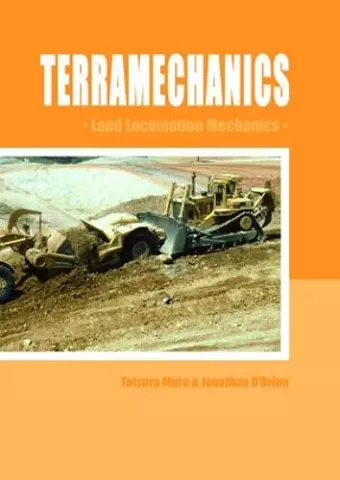Terramechanics
Land Locomotion Mechanics
J O'Brien author T Muro author
Format:Hardback
Publisher:A A Balkema Publishers
Published:1st Jan '04
Currently unavailable, our supplier has not provided us a restock date
This hardback is available in another edition too:
- Paperback£61.99(9780367394608)

Terramechanics is the broad study of terrain-vehicle systems. In this book, all physical processes associated with the static and dynamic interplay between powered and tooled wheeled or tracked vehicles with natural and man-made surfaces are analysed and mathematically modelled. The focus of the book is the technical problem of predicting the performance of a specific vehicle terrain system in the design and operation stages, looking at vehicle specifications, terrain types and uses, and traction performance parameters such as pull and speed. Special features of this book include: * a comprehensive treatment of pneumatic and flexible tyred systems * the presentation of a new method for predicting the performance of track-type vehicles based on small-scale machine model studies * an overview of tyred or tracked vehicles running on weak soil or snow.
This book is devoted to terramechanics (the physical mechanics of land locomotion, i.e. trafficability of wheeled and tracked vehicles running on soft terrains). The ability of a construction or agricultural machine to do effective work in the field depends on the properties of the terrain, and primarily upon the strength and deformation characteristics of soil, sand, loam, snow or other materials. The preceding books on terramechanics dealt, as a role, with empirical approach to the subject. The essence of this book is a synthesis of theoretical mechanics and experimental results. As a consequence, the land-locomotion mechanics may be regarded as a mathematical and mechanical branch of the science. The off-the-road trafficability and working capacity of a vehicle depends principally on ground properties. The importance of properly-conducted experiments to determine the soil-machine system constants, the significance of size effect, the problem of interaction between wheel, track belt and terrain, and the validity of simulation methods are underlined in this book. In Chapter 1 the authors consider some-experimental field procedures that may be carried out to determine the soil constants which determine the shear resistance deformation characteristics, as well as compression characteristics of the soil, including properties of snow or overconsolidated clays. The authors analyze the interface between two domains of machinery operation design and ground behavior. This allows the engineers to construct models of vehicle running behaviour and to perform terrain trafficability studies. Chapter 2 considers the land locomotion mechanics of vehicle systems with ridged wheel. This is the simplest machine-terrain interaction problem of predicting the loaded ridged cylindrical drum operation in a compressible and potentially yielding medium. The prediction is made by developing the mathematical models of the system. The authors model a number of different simple drum/terrain systems: a static loaded cylindrical drum operation on an elasto-plastic and/or visco-plastic medium; heavy cylindrical towed self-powered drums which drive or brake over hard, viscoelastic and/or sandy surfaces. Chapter 3 considers distribution flexible-tire wheel systems; the authors develop a theory to determine the relations between axial load, torque, and ground reaction and contact pressure distribution of the tire, taking into account the compression and shear deformation of soft terrain. Some important relationships between thrust or drag, land locomotion resistance, driving or breaking force and slip ratio have been established. The authors use a mix of empirical and analytical functions in tired-vehicle behaviour prediction. Chapter 4 presents terrain-track system constants for prediction of such machines like bulldozers, army tanks and snowmobiles. The measurements are performed for standard T-shaped track model plate, and are scaled up to real machinery sizes using the dimensional analysis and similarity. In Chapters 5 and 6, the land locomotion mechanics of a tracked vehicle equipped with ridged and flexible track belts are analyzed. The behaviour of simplest tracked vehicle systems of riged-track types and the performance of specific tracked vehicle with flexible track systems which requires to operate upon particular complex terrain are examined in a generic manner. The modeling is based on a mixture of experimentally found parameters and analytical considerations. This book synthesizes an important practical information for the prediction of pneumatic and flexible tire systems, the performance of track type vehicles, and trafficability of tire or tracked vehicles running on a weak soil or snow. This book may be very useful to students, postgraduate students, engineers and scientists who deal with terramechanics and off-the-road trafficability. Yurj N. Sankjn (Ul'yanovsk) Zentralblaatt Math 20C
ISBN: 9789058095725
Dimensions: unknown
Weight: 680g
290 pages